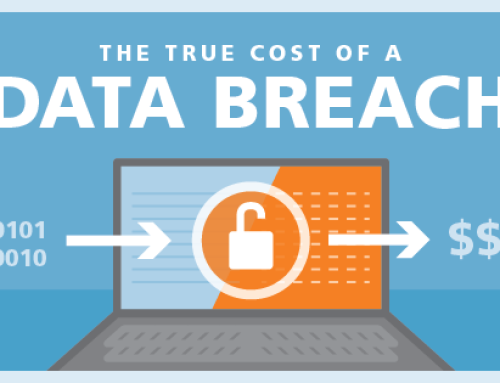Role of Information Technology
Managers can better understand the role of Information Technology by drawing their attention to it’s capabilities and the importance of aligning those with corporate strategies. Information should be provided on the values of IT and how it affects the overall growth of the company. In order to accomplish this, IT departments need to become familiar with the business’ strategies and plans, recognize conflicts between these strategies and operating objectives, and then identify any conflicts in operating objectives and plans (Robbins Gioia, 2013). Creating a clear strategic plan with actionable results that can be supported by the Enterprise Architecture (EA) can help explain the role of IT to corporate managers. This alignment of IT with business strategies is not necessarily an easy task. While the Internet world moves very fast, many businesses utilize older systems that are the backbone of their operations.
For example, let’s take a look at system utilized in a Healthcare facility that I am very familiar with. In the beginning, the organization started using an electronic health record way before it was popular and mandated. It was built on an operating system that was ahead of its time twenty years ago, but is now obviously lacking in key areas. The program has very limited capabilities from a clinical aspect and is extremely limited in its integration capabilities. It was built on an old UNIX platform and uses a text based terminal emulation program that looks similar to DOS. While this older system has its benefits, it is not in line with the graphical interfaces of today and is foreign and cumbersome to younger employees. Older employees who are used to the interface are able to quickly move through the screens via keyboard and are thus more efficient because they do not need to move their hand away to operate the mouse or search the screen for buttons to click.
A major drawback, however, is that it only keeps data for forty-five days. Hence, it cannot be considered a data repository. In order to address this limitation, many “glue-ware” applications have been applied to enhance its capabilities. While these get the job done, they increase inefficiency. For example, in order to transfer live data from the system, the entire chart has to be printed and then scanned into a separate system. This is obviously a gross misuse of paper and time. In order to grow as a business and remain competitive, we need to keep an open mind and always keep an eye on emerging technologies and how our competitors are using them. Just because we have an IT system that was ahead of its time twenty years ago, it does not mean that we can afford to rest on our laurels. This experience made me realize that doing the same thing over and over is not enough in order for a business to improve. Change is not easy, but this is how we learn and incorporate new strategies. Managers become complacent and find it easier to go with the status quo, which most of the time keeps companies behind and restricts the creativity of the organization. Including IT into the business’ strategic plan is not just important; the very survival of the organization could depend on it (High, 2011).
Techniques to Achieve Alignment
Business and IT alignment is not easy to achieve due to the dynamic nature of business. According to Hajela (n.d.), business and IT alignment is an eight step process defined as:
- Identifying the business needs that are driving IT.
- Creating an IT vision.
- Assessing the current alignment.
- Identifying alignment gaps.
- Prioritizing initiatives.
- Evaluating implementation options.
- Creating a migration plan.
- Adjusting the current IT strategy.
It is important to be aware of the link between dynamic business needs while working on an IT solution. This will ensure that the solution is in line with the current business need.
Currently, it seems as though those who hold the purse strings are somewhat isolated when it comes to current and future IT implementation. They are looking at the return on investment of the current system and the large costs involved in revamping or implementing a new solution. While I can understand this approach (they are beholden to the Board of Directors and shareholders), I feel that it is shortsighted when it comes to the day to day interactions of the IT systems.
Identifying the business needs that drive IT is the first step in realizing current shortcomings. From IT’s perspective, they have to manage an antiquated system and additional support systems used as “add-ons”. This places an unnecessary burden on hardware, software and staff resources. Additionally, backup strategies have to be defined and implemented across disparate systems instead of a consolidated, heterogeneous system. There are also separate storage and network strategies that have to be considered
Once the business needs have been identified, creating a forward thinking IT vision would help point out these issues and potential revenue saving strategies. It also would provide the various stakeholders a chance to define their individual needs in respect to the system as a whole. This new vision could take into account currently available technologies (tablets, smartphones, etc.) as well as up and coming ones (virtual reality, tele-medicine, voice recognition, etc.).
The crucial step in this process would be to evaluate the current IT alignment and define any gaps. IT should be able to provide compelling metrics that point out the inefficiencies in maintaining disparate systems. These include, but are not limited to:
- Financial obligations to various vendors.
- Costs associated with training in various software packages.
- Costs associated with different hardware platforms.
- Time required maintaining and deploying multiple software solutions.
Oftentimes, corporate leaders are not aware of the capabilities of IT, and new solutions proposed fall on deaf ears. Identifying any existing alignment gaps provides an opportunity for IT to point out these inefficiencies and propose new technological or procedural solutions.
Once a new IT vision has been settled on, it is imperative to prioritize the new initiatives. What may seem like a priority to management may be a monumental undertaking for IT. Prioritization can help determine which initiatives must be implemented no matter the cost and those that can be implemented rather quickly and provide an increased value. This process also enables IT to focus on core initiatives instead of being spread out among many tasks of varying importance.
Once the new initiatives have been prioritized, the process of evaluating implementation options can proceed. Obviously, cost will be a major consideration, but there are other equally important implementation options that need to be considered, such as:
- In-house development or outsourcing.
- Re-vamping versus an overhaul.
- Strategic partnerships with vendors.
- Time required to complete implementation.
Any migration strategies will depend on these considerations already being settled.
After the implementation strategies have been defined, a comprehensive migration plan or plans will need to be laid out in detail. This will include cost projections, project milestones, integration strategies and eventual deprecation of replaced systems. The migration plan will be the key to the success of the new IT vision. It does not matter if the project comes in on budget and the new solutions work, if the migration is not as smooth as possible; it has the ability to effect real time productivity and more importantly, perception and acceptance of the new solutions.
While it is possible that the role out of the new IT vision will occur without mishap, it is inevitable that strategy adjustments will be necessary. This is true both during and after the implementation as fluctuations in technology and additional functionality are bound to occur. It is likely that as new solutions are implemented, new possibilities will be identified. Also, limitations in certain solutions may require additional resources. Hence, it is important to build this step into the initial planning.
Risks
If an organization does not realize the importance of investing in IT alignment resources, it risks business stagnation and alienation of the IT department. By not having a cohesive relationship with IT, a business opens itself up to system fragmentation, which leads to instability and inefficiency. Additionally, it opens the door for competitors to market newer solutions, which will make them seem more proactive and willing to embrace new technologies. This will ultimately trickle down to the consumer’s decision making process, whether the consumer is a customer or an employee. The business’ brand recognition could suffer as well.
Conclusion
The alignment of IT with corporate business strategies will ultimately come down to proving the net value of proactive IT involvement. While to some this may seem to be an obvious value proposition, to many it is an afterthought. IT is generally treated as another cost center instead of a valuable partner that can help shape the future of the business as well as realize long term return on investment. In today’s world, IT and the technologies it manages is a vital commodity that not only can improve a business’ internal functionality, but can direct it’s future growth and market branding.



